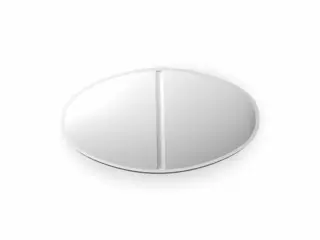Buy Theophylline Online in Australia
| Package | Dosage | Price | Price per Dose | |
|---|---|---|---|---|
| Dosage: 400mg | ||||
| 360 pill | 400mg | AUD683.71 | AUD1.90 | |
| 180 pill | 400mg | AUD371.22 | AUD2.06 | |
| 120 pill | 400mg | AUD272.40 | AUD2.27 | |
| 90 pill | 400mg | AUD226.99 | AUD2.51 | |
| 60 pill | 400mg | AUD170.91 | AUD2.86 | |
| 30 pill | 400mg | AUD104.14 | AUD3.50 | |

Theophylline Description
Introduction to Theophylline
Theophylline is a medication that has been used for many years to treat respiratory conditions, particularly asthma and chronic obstructive pulmonary disease (COPD). It belongs to a class of drugs known as methylxanthines, which work by relaxing the muscles around the airways, making it easier to breathe. Due to its long history of use, theophylline is well-known among healthcare providers and patients, and it remains a valuable option for managing airway diseases in certain cases.
How theophylline works
The primary mechanism of theophylline involves inhibition of phosphodiesterase enzymes, which leads to an increase in cyclic AMP levels inside cells. This biochemical change results in muscle relaxation and dilation of the bronchial tubes. Additionally, theophylline is believed to have anti-inflammatory properties, helping to reduce airway inflammation over time. This dual action makes it beneficial for controlling chronic respiratory symptoms and preventing asthma attacks or COPD exacerbations.
Advantages of using theophylline
One significant advantage of theophylline is its effectiveness in improving lung function for many patients. It can be used as a standalone treatment or alongside other inhaled medications like corticosteroids or beta-agonists. The drug is also available in various forms, including tablets, capsules, and liquids, providing flexibility for patient preferences and needs. For some patients, theophylline offers a cost-effective alternative to newer, more expensive inhaled therapies.
Potential side effects and risks
Although generally effective, theophylline has a narrow therapeutic window, meaning the difference between a beneficial dose and a toxic dose is small. Common side effects may include nausea, headache, insomnia, and gastrointestinal discomfort. In higher concentrations, it can lead to serious complications like heart arrhythmias or seizures. Regular blood level monitoring is essential to ensure safety and efficacy. Additionally, certain factors such as smoking, age, and concurrent medications can influence theophylline levels, making individualized dosing critical.
Precautions and considerations
Patients taking theophylline should be cautious about potential drug interactions. Many medications, such as certain antibiotics and other respiratory drugs, can alter the metabolism of theophylline, increasing the risk of side effects. Healthcare providers typically recommend routine blood tests to monitor drug levels, especially when starting or adjusting treatment. Patients with a history of heart disease, epilepsy, or liver disease should inform their doctor before beginning therapy with theophylline.
Conclusion
Theophylline remains a valuable medication in the management of chronic respiratory diseases. Its ability to relax airway muscles and reduce inflammation can significantly improve breathing for many patients. However, due to its potential for adverse effects and the necessity of close monitoring, it is usually reserved for specific cases where other treatments are not suitable or ineffective. Proper medical supervision ensures that the benefits of theophylline outweigh the risks for individual patients, providing relief from respiratory symptoms and enhancing quality of life.
See Also


